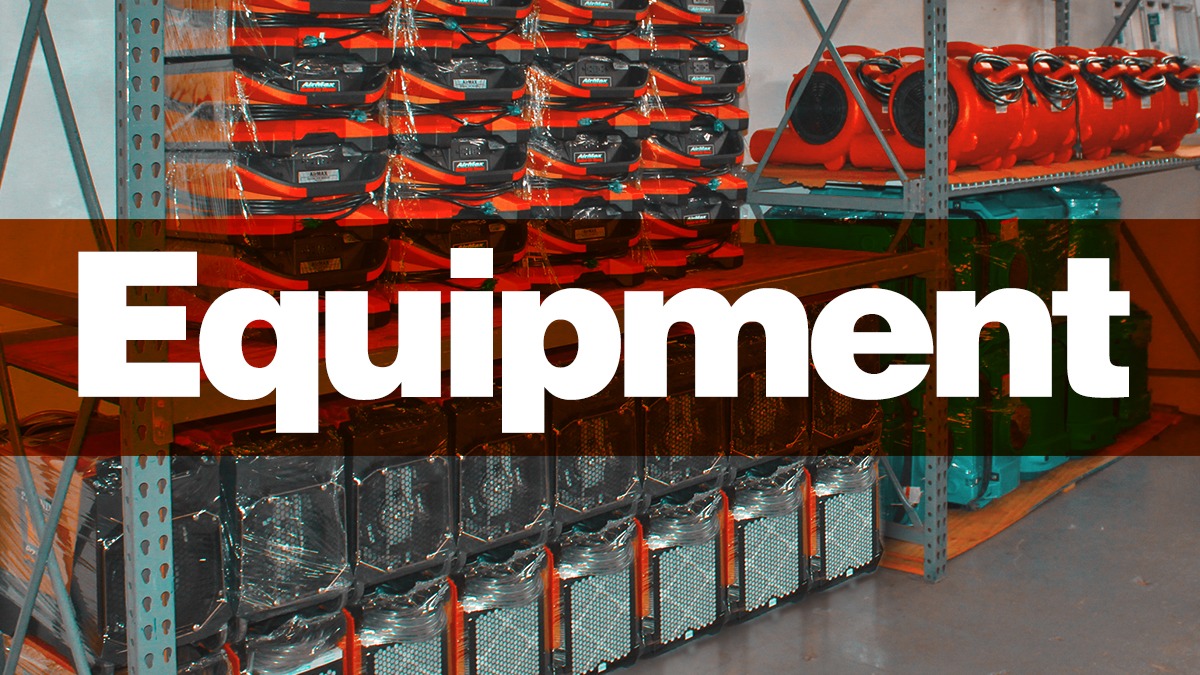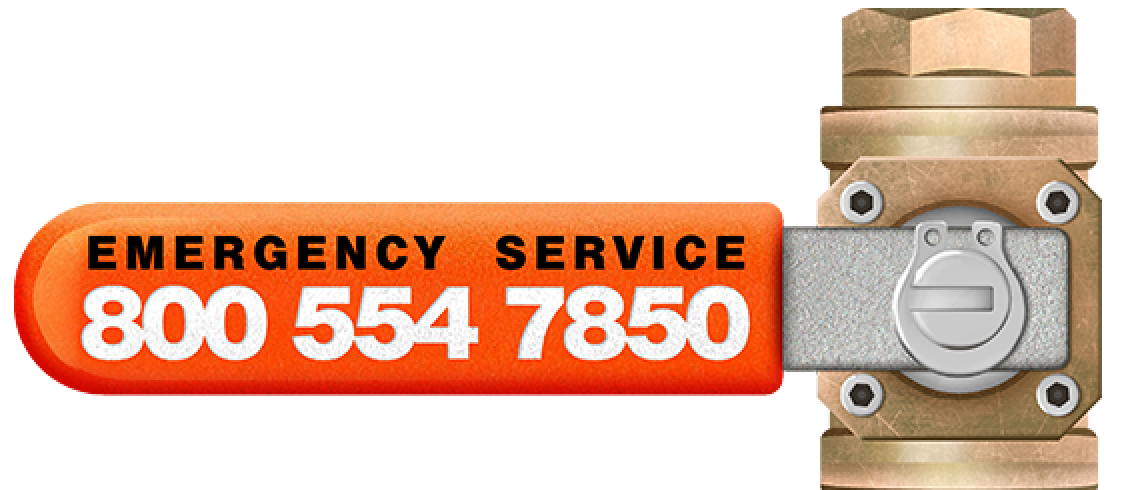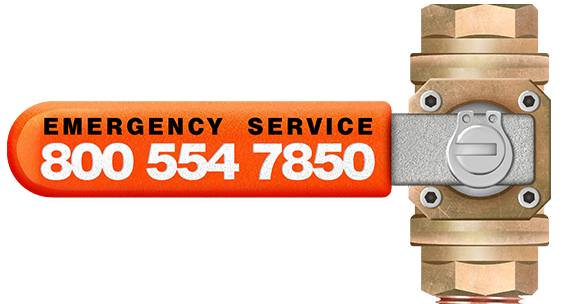Water Damage Series – Part 5: Equipment
When you call in a professional for help in any area there are a few reasons you do so. One is knowledge, another is to get assistance with labor, but very often the reason it is best to call in the professionals is that they have the equipment. Professional grade, commercial grade, industrial grade, whatever you call it, it is built for the job and does the job well.
In this installment of the water damage series we will be covering the primary equipment used in structural drying.
Equipment Is Used for Drying
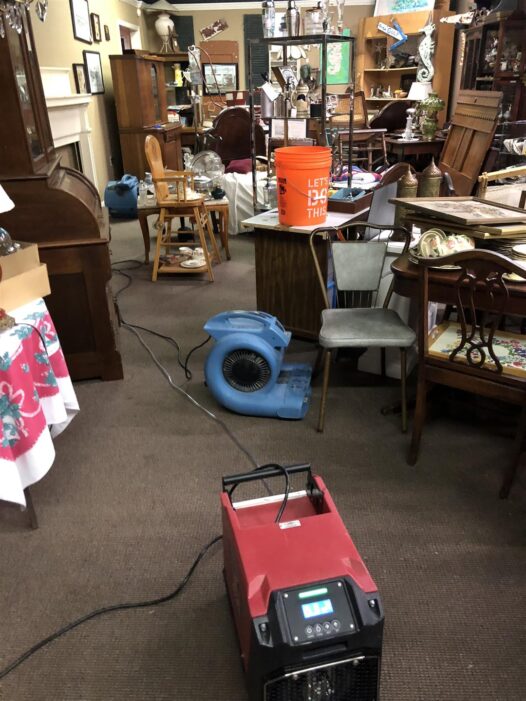
The point of structural drying is finding what materials have absorbed excess water and moving if from where it doesn’t belong, in the building materials, to where it does belong – somewhere else.
How do we do that? The short version is this: we use equipment to move the moisture into the air (evaporation) and then use other equipment to remove that moisture from the air (condensation). The long version is found in an earlier post titled The Principles of Drying Your Home or Business.
Equipment Used by Water Technicians
The water technician’s task is to manipulate the atmospheric environment within your property. Temperature, relative humidity, pressure, and airflow all play a role. So far, we’ve not found a technician able to manipulate these things reliably and repeatably without the aid of equipment. Here is a list of the equipment used in structural drying that we’ll cover:
- Generators
- Extractors
- Air Movers
- Dehumidifiers
- Air Filtration Devices
Generators
A generator isn’t equipment that will be used in every case, but the equipment that follows needs power to run. If you bust a pipe in your house or your tub overflows, you still have power. The equipment can be plugged into your outlets and draw power from your electricity provider. In most cases that is fine. After a hurricane rips up your roof, fills your house with rain, and knocks out power to the whole neighborhood, we need to bring in a generator to run the equipment that will dry your property as quickly as possible and to minimize any water damage that would otherwise result.
Extractors
When you have standing water in your home it becomes really important to remove it – and quickly. It’s not like a tub where you can release the plug and let it all go down the drain. Your water technician will need to use extractors to remove the water. Even when the water flows out the door to the outside and you are not walking through an inch or more of water, if there was that much water, your carpets are waterlogged and very heavy.
This is one of the most important steps during a dry out process. It will help speed up the process of drying and achieving drying standards.
These machines have different attachments that can be used for special situations. There are light extraction wands. Deep extraction attachments. And those design for things like hardwood floors. Sometimes the standing water requires a submersible pump.
One way or another, when there is enough water, it just needs to be vacuumed up. That’s what the extractors are for.
Air Movers
Air movers is the industry’s fancy way of saying ‘big fans’. In truth, the term helps convey more clearly what the equipment is all about. It is all about moving air. The movement of air is the atmospheric element over which we have the most control. As such, there are several different types of air movers, each with a specific purpose.
Carpet dryers are great for creating velocity and airflow. They are the most common type of air mover and are capable of forcing enough air under the carpet so that it floats rather than traps the water beneath it.
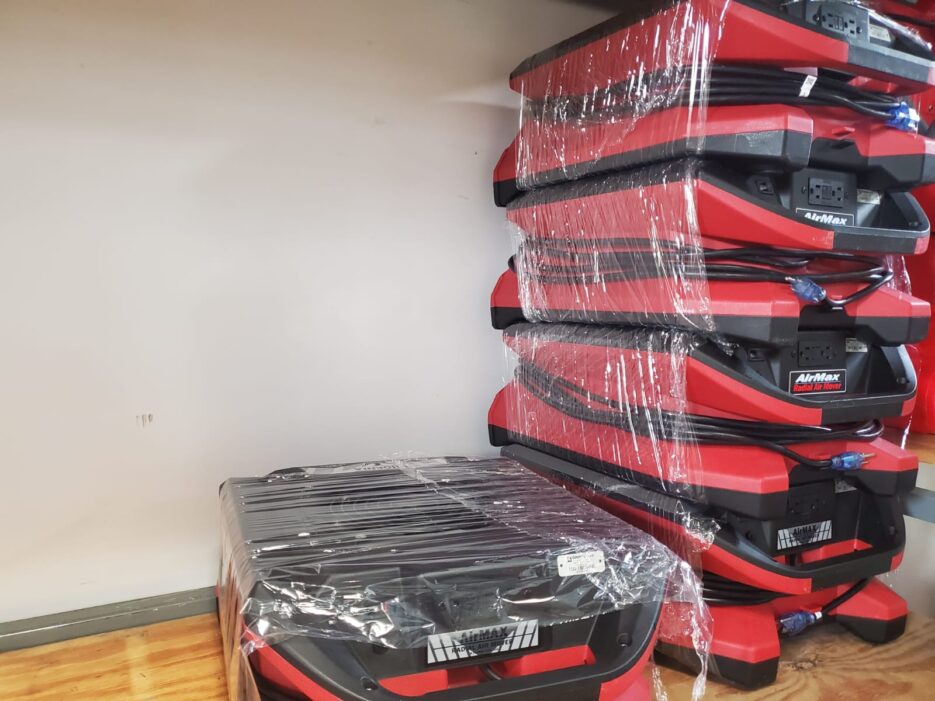
Some are designed to move high volumes of air, more so than carpet movers, but are low pressure so they couldn’t be used for floating a carpet or drying air ducts.
There are times you need high pressure, but the carpet dryer is too bulky for the space. We have air movers for that.
Cabinets, wall cavities, and hardwood floors are places you can’t easily place equipment, so there are air movers designed for this purpose. Many attachments are made for ‘hard to reach’ places. Air movement is needed in those areas too, and a box fan you get from your local hardware store just can’t provide that.
Hard to Reach Places
Moisture in walls requires special attention. You can place air movers in your room and get lots of airflow going, but how do you get that movement inside the walls? Something a little more aggressive might needed. If you don’t dry out the wall cavity they could become damaged and unsalvageable.
In some situations, your water tech will drill holes into strategic places and use the appropriate attachments to create airflow. This is done with the hope of being able to dry that cavity without having to actually remove the wallboard which will later have to be replaced.
The Right Air Mover for the Job
When moving air to dry a structure the trained water technician will use these air movers to manipulate the velocity of the air movement, the volume of the air moved, and to affect pressure as needed by the circumstance.
Every job is unique and requires careful analysis of what is wet and how wet it is. This all determines what equipment will be needed to dry the structure before microbial growth kicks in. If mold has already started to grow, then after removing those affected materials, the goal is to dry the structure to prevent any growth from returning.
The Right Dehumidifier for the Job Too
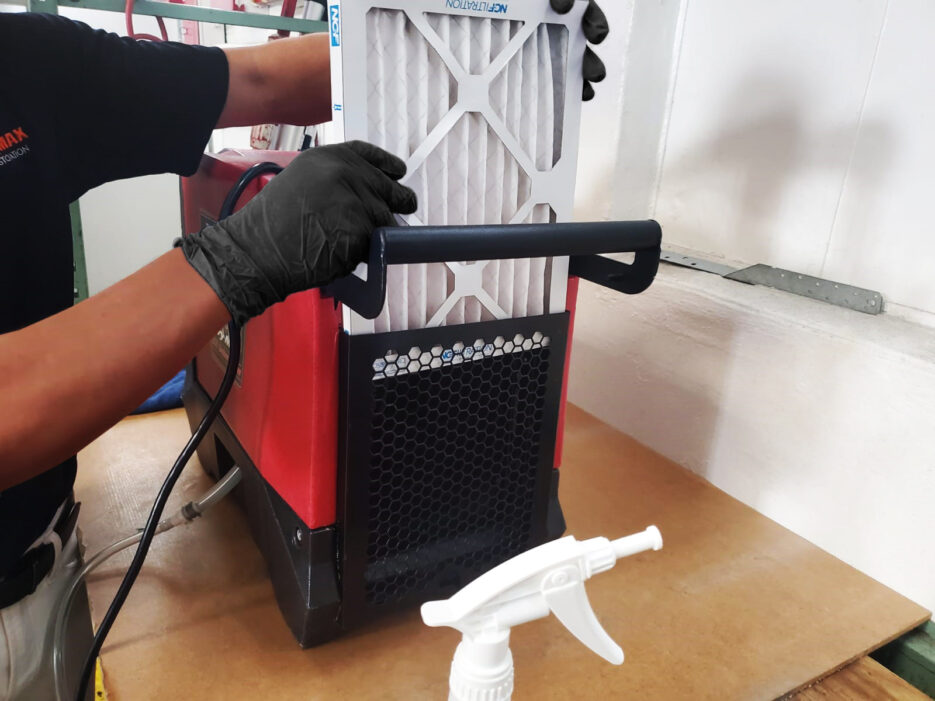
After the air movers have nudged moisture into the dry air (okay, the technical term for that is evaporation) there comes a point where the air can’t hold anymore water. You need to get that moisture out of the air to make room for more.
If warm dry air is a sponge that soaks up water from wet materials, the dehumidifier is equipment that wrings that sponge out.
There is more than one type of dehumidifier and what is used for your structural drying will be determined by your unique situation.
Refrigerant Dehumidifiers
The basic function of a refrigerant dehumidifier is that air comes into the device, it is cooled to a temperature at or below the dew point, which causes the water to condense into liquid. But this time the water is in a controlled space instead of in your walls, floors, or ceilings.
All refrigerant dehumidifiers function on the same principles, but some use conventional refrigerants and are effective in certain circumstances, and others use a Low Grain Refrigerant (LGR) and are effective for a wider range of circumstances.
Desiccant Dehumidifiers
You know those little things they put in pill bottles? That little thing is called a desiccant and is there to absorb the moisture from the sealed bottle, so the pills don’t stick together. They work quite well.
That same principle is applied to structural drying equipment. We’re not going to dump a wheelbarrow full of desiccant pouches into your living room to soak up the moisture. No, we do it with a machine.
The desiccant dehumidifier is an ingenious application of technology. Here is the $2 version of what it does:
- Draws wet (humid) air through the intake opening.
- Pushes the air through a filter wheel with silica gel.
- The silica gel pulls the moisture out of the air and traps it.
- On the other side of the wheel the air has two exhaust destinations.
- Out into the room all dry and ready to absorb more moisture.
- Back through the machine and redirected to the silica gel wheel.
- The air that is cycled back through the machine will go through a heater before being blown back through the silica gel wheel.
- Now as warm dry air passes through the gel it picks up the moisture from the wheel and is forced out through ducting to the outside of the structure.
The wheel with the silica gel rotates so that on the intake it traps moisture and then is rotated for the exhaust airflow to release it.
With a refrigerant dehumidifier, you need to drain the condensed water through a tube into a drain, or you need to empty a bucket.
The desiccant dehumidifier uses air to transport the water to the outside of your structure. It also generates dry air to be redirected back into the structure to make it ‘thirsty’. This allows it to receive more evaporated water and continue like this until all the moisture is pulled from the building materials and thrown outside.

Heat and Air Exchange
In some circumstances the crawlspace beneath a structure needs to be dried out. Here the water technician may use heat and air exchange to accomplish it.
The technician will place a heater outside the structure. It will heat the outside air and force it into the crawl space to heat up that chamber. That hot air will draw the water into it. With an air mover strategically placed in the crawlspace, the hot (now moist) air will be blown out. Lots of air flow and heat will accelerate the drying of the crawlspace.
Air Filtration Devices
Air quality in your property is always a concern, especially after a disaster. This is especially true when microbial growth has already begun, and mold spores are multiplying. Or when there has been smoke and soot because of a fire. Or when there is a lot of air movement in the space.
That last one suggests that anytime you do structural drying your air quality is a concern. Well, yes. Forceful air movement will stir up dust that has previously settled or dirt and sand that has been tracked into the space throughout the years.
Whether you call it an air filter or air scrubber, HEPA filter, or even a negative air machine, it is all the same thing. A piece of equipment used by your technician to clean up after a water loss disaster.
The air quality in your home or business is a very important factor for your health and the fitness of the space to be occupied again. And it is important for the workers who are setting up and monitoring your custom drying system.
These machines are often used for creating negative pressure in the space. What that means is that there is more air pressure outside the room than in. This will help the room dry more quickly, but more importantly, it is intended to prevent contamination of adjoining areas. Whether it is excessive dust being stirred up, smoke, or mold, cross contamination is a no-no and negative pressure is part of the strategy to prevent it.
Monitor Daily – Adjust Accordingly
Fortunately, the process of restorative structural drying is a process that is measured in days rather than weeks or months. If you’ve had damaged building materials removed because of microbial growth or because it is unsalvageable, the process of rebuilding will take longer than the drying. Just getting the necessary building permits can sometimes take more time than it will take to dry out your structure.
But there is a way it can happen in days rather than weeks. It is with an effective drying plan that uses the appropriate equipment and is adjusted according to progress.
After setting up your drying system, customized to your circumstance, a water technician will return daily to check on progress and make any adjustments that may be necessary. Filters could be changed, water collection buckets may be dumped if there is no drain hose, but each day the technician will take new measurements of moisture, log it, and document the changes to the equipment and any other observations that are relevant to the drying process.
Conclusion
Restorative structural drying is a science in itself. Amazingly, the techniques used today to dry a home or business are fairly new. It was only in the 80’s, less than 40 years ago, that some of these techniques began to be deployed and shared widely within the industry.
You may be surprised by the amount of equipment that is needed to dry your home quickly and properly. There is a formula for the number of air movers needed based on square footage. Likewise for dehumidifiers and air scrubbers. When there is no other power on site, a generator will be needed. At least one, and if the formula indicates that there is a lot of equipment needing power, you may see multiples of those too.
When you need your home or business dried out, we don’t mess around. We get in, analyze the situation, place the equipment, and get it done.





